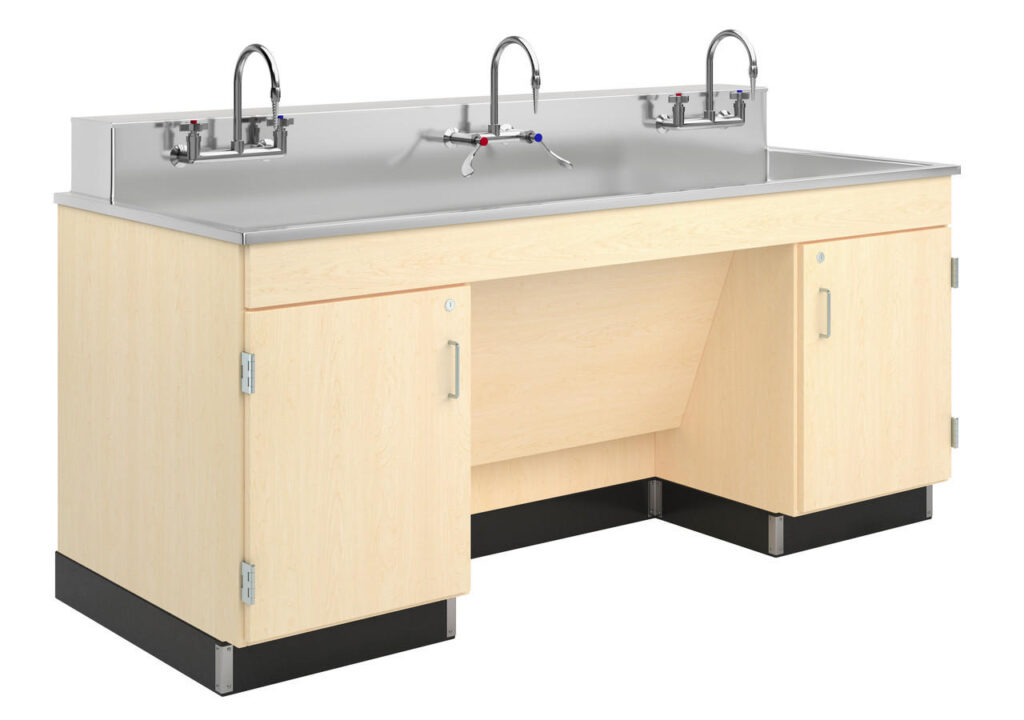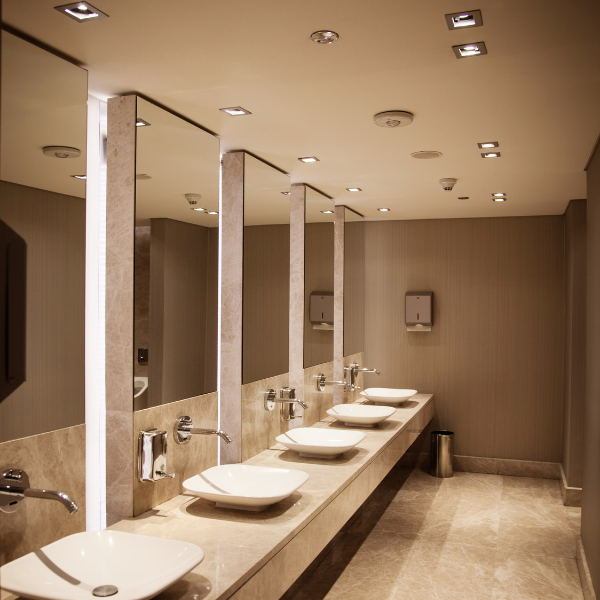Contents
Table of Contents
ADA sink millwork construction in malls is an important topic that focuses on making shopping spaces accessible for everyone. ADA stands for the Americans with Disabilities Act, which requires public places to be easy for all people to use. This includes designing sinks and other facilities that can accommodate individuals with different needs. When malls follow ADA guidelines, they create a welcoming environment for everyone, including those who use wheelchairs or have other mobility challenges.
In mall construction, millwork refers to the custom woodworking used for finishes and fixtures. This can include counters, cabinets, and, importantly, sinks. ADA-compliant sinks are designed to be at the right height and have the right features to ensure all shoppers can easily use them. By focusing on ADA sink millwork construction, malls can show their commitment to inclusivity and accessibility.
What is ADA Sink Millwork Construction in Malls? An Overview
ADA sink millwork construction in malls is about creating sinks that everyone can use easily. The ADA, or Americans with Disabilities Act, sets rules to help people with disabilities. This includes designing sinks that are the right height and have features that make them easy to access. In malls, these sinks are found in restrooms and food courts, ensuring that all visitors can wash their hands comfortably.
Millwork is a term used to describe custom woodwork in construction. This includes cabinets, counters, and sinks. When we talk about ADA sink millwork construction in malls, we mean building sinks that meet the ADA standards. These sinks are not just functional; they also look good and fit well in the mall’s overall design.

Why ADA Compliance Matters in Mall Design
Making sure that malls follow ADA guidelines is very important. First, it helps ensure that all people, regardless of their abilities, can enjoy the mall. This includes families with children, elderly visitors, and those with physical disabilities. When malls are accessible, more people can come and enjoy shopping, dining, and entertainment.
Second, being ADA compliant is the law. Malls that do not follow these guidelines can face penalties and may be required to make expensive changes. By investing in ADA sink millwork construction, malls show that they care about their customers. This can lead to better customer satisfaction and a positive reputation.
Benefits of ADA Compliance
- Inclusivity: Everyone can enjoy the mall experience.
- Legal Protection: Malls avoid fines by following the law.
- Positive Image: Malls that care about accessibility attract more visitors.
Key Features of ADA-Compliant Sinks in Malls
ADA-compliant sinks have specific features that make them easier to use. One important feature is the height. These sinks are installed at a level that is accessible for people in wheelchairs. This means the sink should be no higher than 34 inches from the floor.
Another important feature is knee space. ADA sinks should have enough space underneath so that someone in a wheelchair can roll right up to it. Additionally, faucets must be easy to operate. This often means using lever handles or sensors that require minimal effort.
Important Features of ADA Sinks
- Proper Height: Sinks should be 34 inches high or lower.
- Knee Clearance: Space beneath the sink for wheelchair access.
- Easy-to-Use Faucets: Levers or sensors for simple operation.
Benefits of Using Millwork in ADA Sink Construction
Using millwork in ADA sink construction offers many advantages. Millwork allows for beautiful designs that can match the mall’s style. Custom woodwork can make sinks look elegant and inviting. This can enhance the overall appearance of restrooms or dining areas in the mall.
Moreover, millwork is durable. High-quality materials can withstand heavy use, ensuring that the sinks last a long time. This means fewer repairs and replacements, which can save money in the long run. By combining aesthetics and durability, malls can provide a great experience for all visitors.
Advantages of Millwork in ADA Sinks
- Custom Design: Matches the mall’s overall look.
- Durability: Long-lasting and resistant to damage.
- Cost-Effective: Saves money on future repairs.
Real-World Examples of ADA Sink Designs in Malls
Many malls across the country have successfully integrated ADA-compliant sinks into their designs. For instance, a popular shopping center in New York features sinks that are not only accessible but also stylish. The sinks blend seamlessly with the mall’s modern design while meeting all ADA requirements.
Another example can be found in a mall in California, where restrooms feature bright, colorful sinks with easy-to-use faucets. This design makes the space welcoming and fun while ensuring accessibility for all shoppers. These real-world examples show how effective ADA sink millwork construction can be in creating friendly and inclusive environments.
Notable Examples
- New York Mall: Stylish sinks that fit a modern theme.
- California Mall: Bright colors with user-friendly features.

Conclusion
ADA sink millwork construction in malls is essential for creating spaces that everyone can enjoy. These sinks help ensure that people of all abilities have access to necessary facilities. By following ADA guidelines, malls can create an inviting atmosphere for all shoppers.
Incorporating millwork into these designs not only enhances functionality but also adds beauty to the space. As malls continue to evolve, ADA-compliant features will play a key role in making shopping centers welcoming for everyone.
FAQs
Q: What is an ADA sink?
A: An ADA sink is designed to be accessible for people with disabilities, following specific height and space guidelines.
Q: Why are ADA sinks important in malls?
A: They ensure that everyone, including those with disabilities, can use the facilities comfortably.
Q: What materials are used in ADA sink millwork construction?
A: Common materials include wood, laminate, and metal, which can be customized for durability and design.
Q: How high should an ADA sink be?
A: An ADA sink should be no higher than 34 inches from the floor.
Q: Can ADA sinks be stylish?
A: Yes! Many ADA-compliant sinks are designed to be both functional and visually appealing.
Q: What are some common features of ADA sinks?
A: Key features include proper height, knee clearance, and easy-to-use faucets.
For additional resources:
- Visit VSCO Magazine
- Check out LessInvest
- Learn more at Market Brizz
- Explore Make1M
- Discover The Pizza Edition
- Stay updated with Fintech Zoom
- Connect with BaddieHub
- Visit Market Blick
- Explore Trofni




